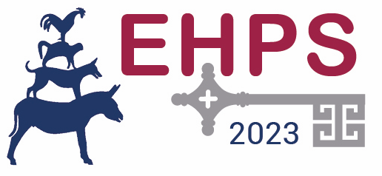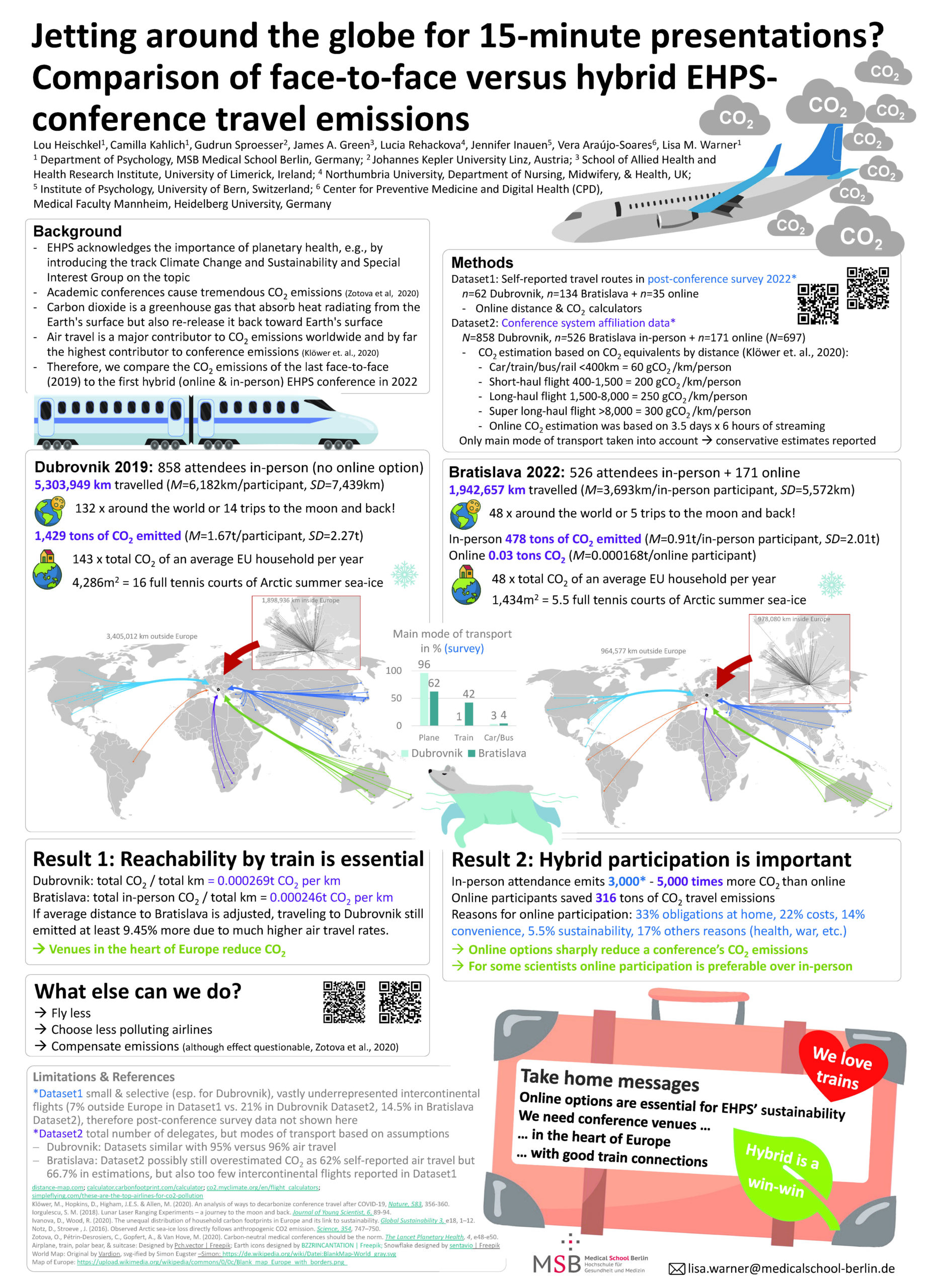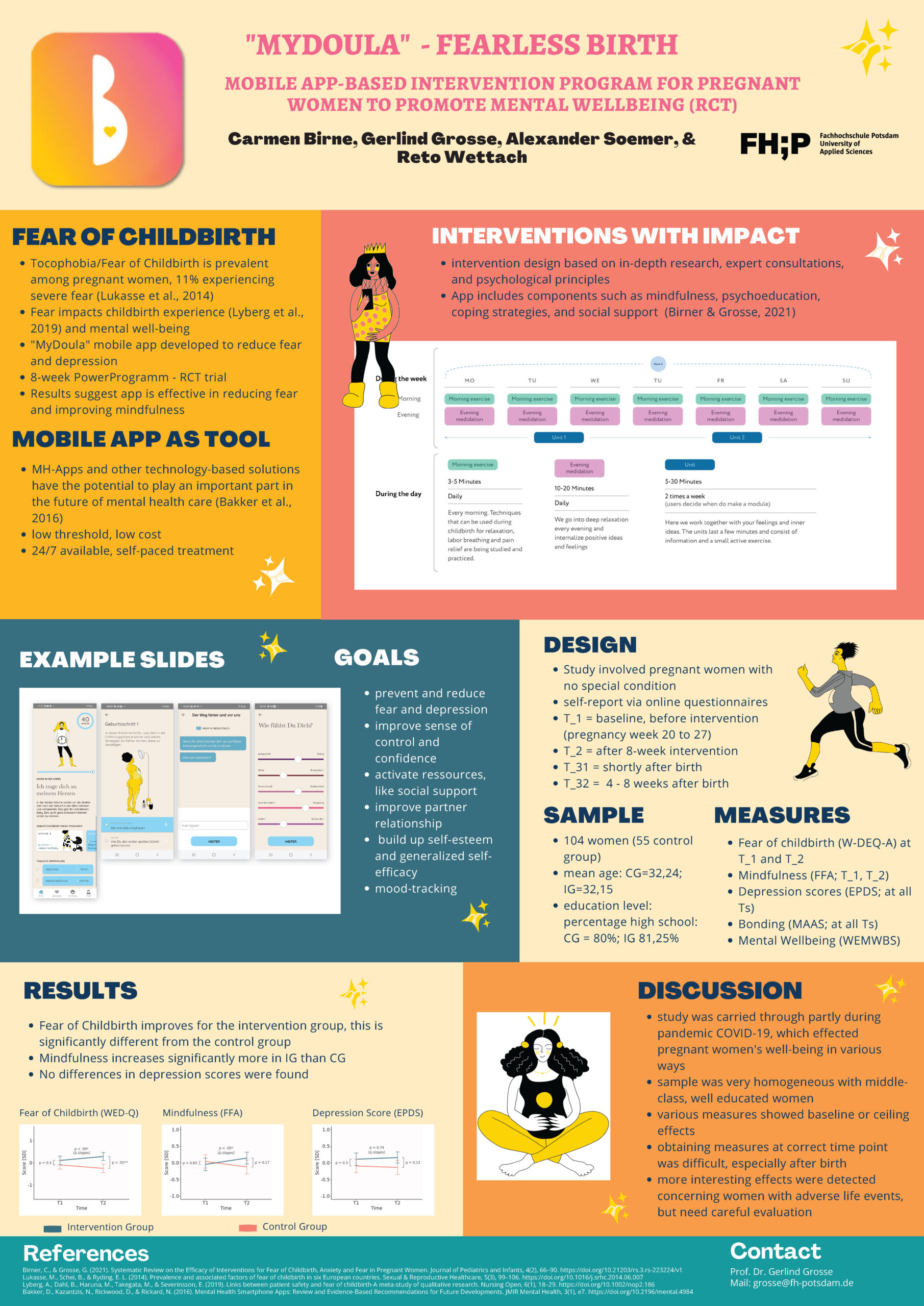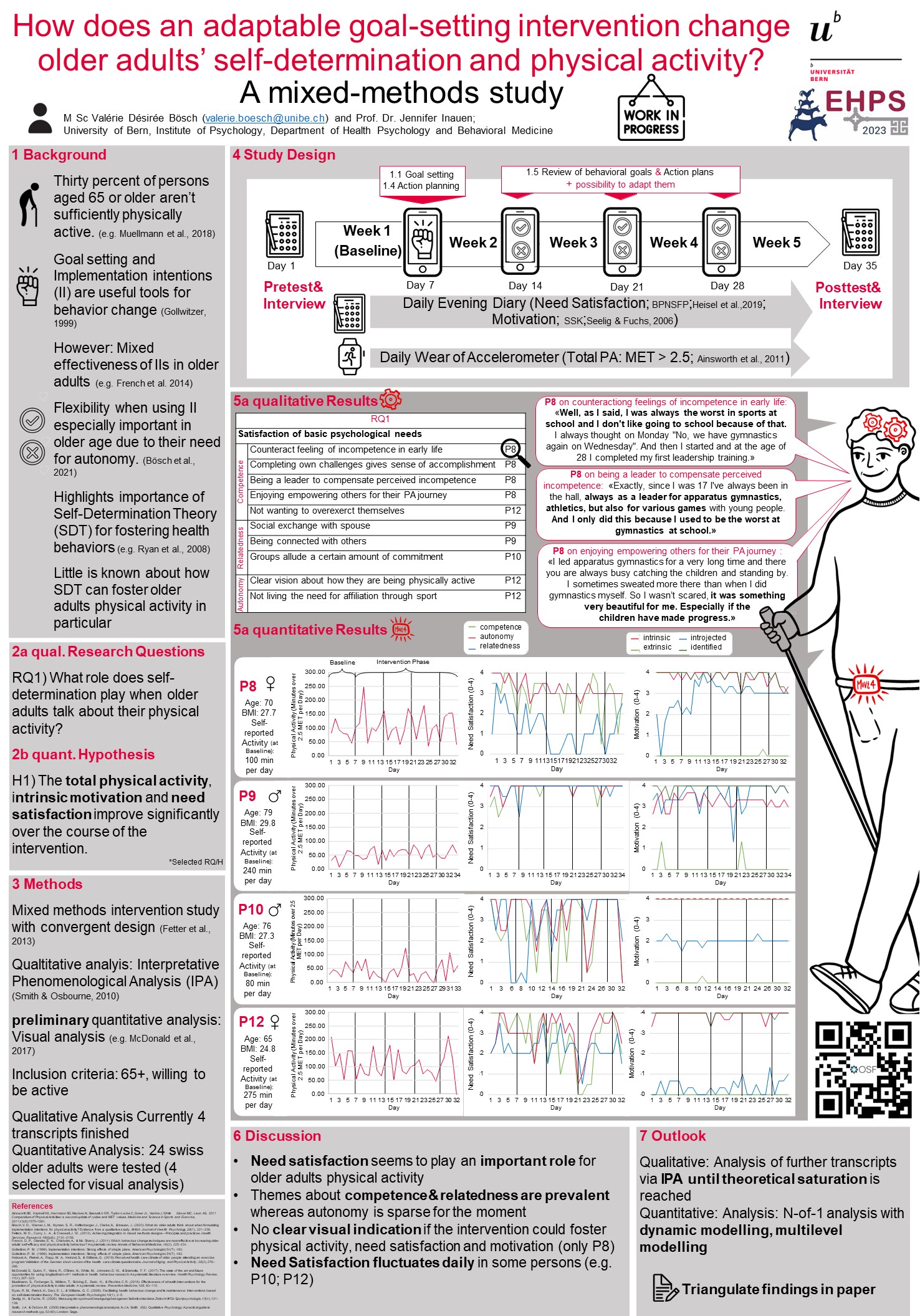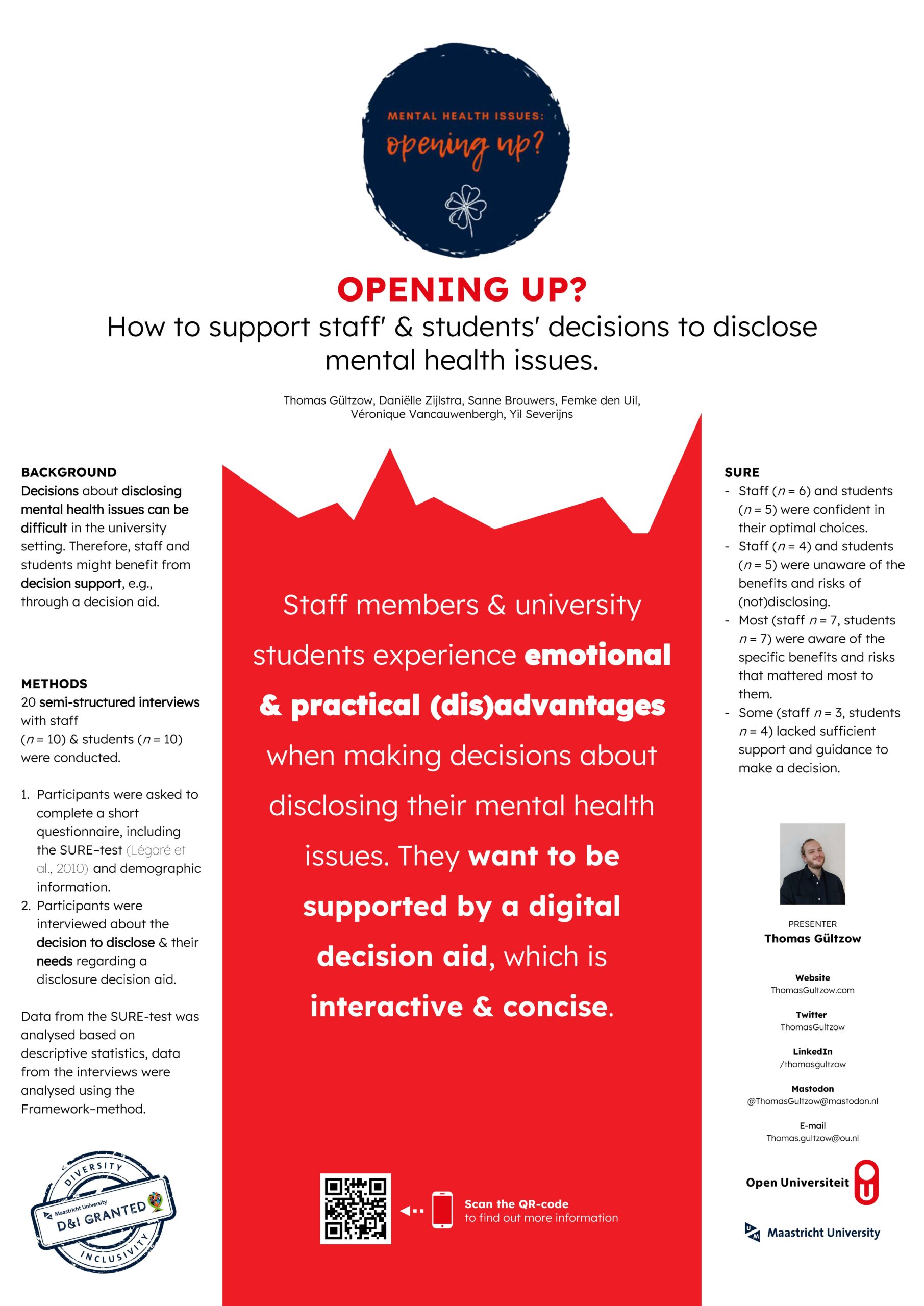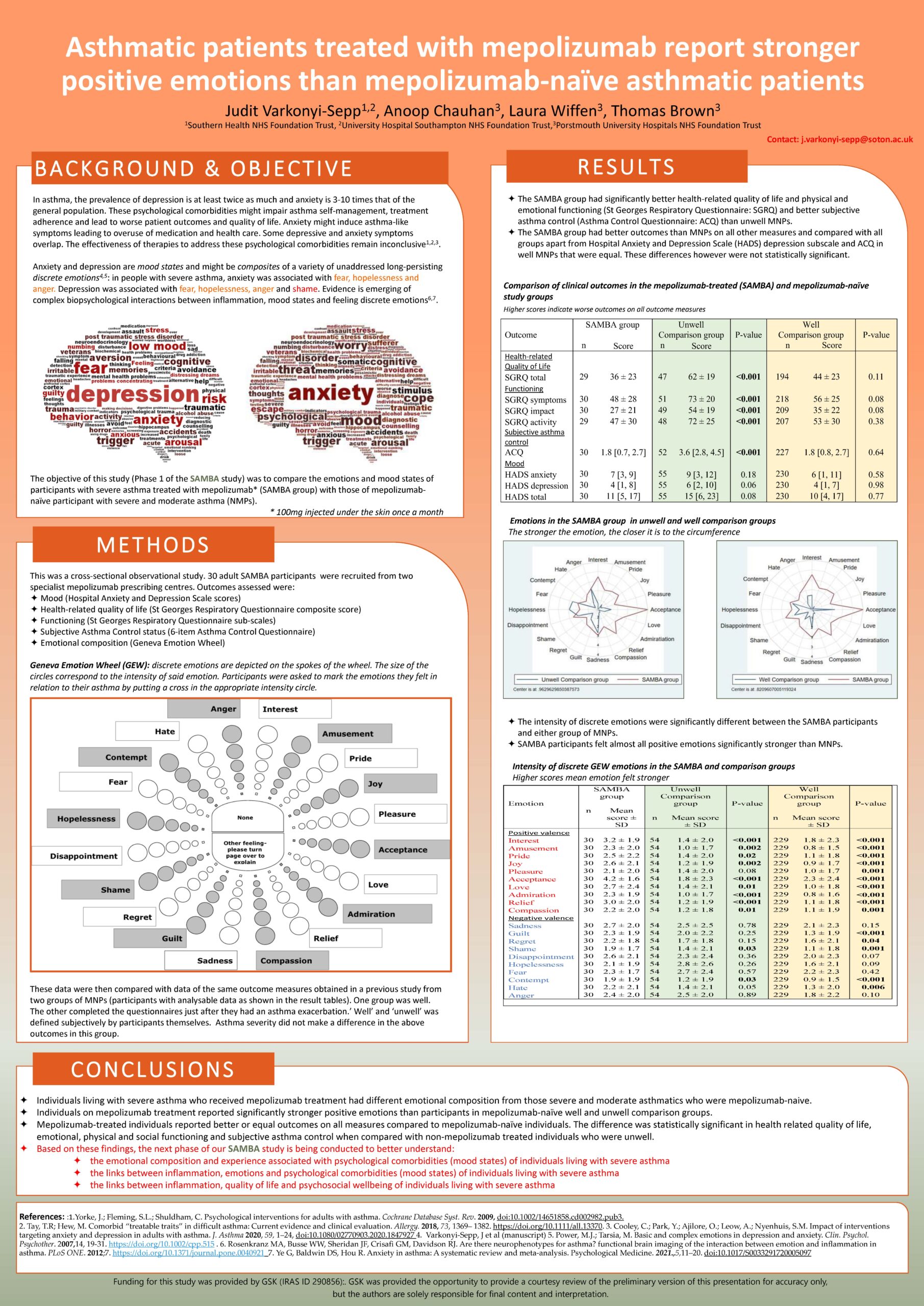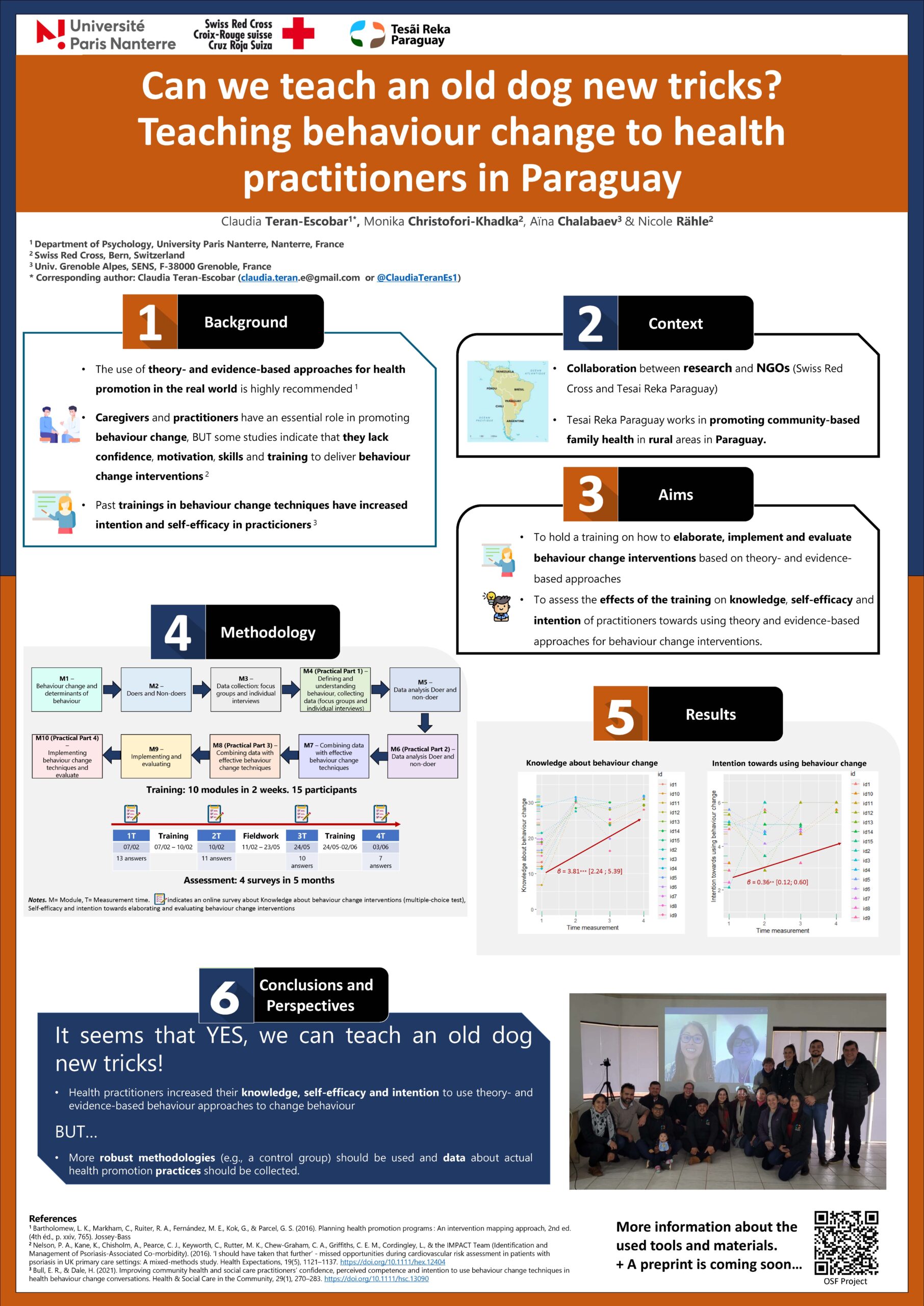Poster Awards
Poster Awards
EHPS 2023 Poster Award Winners
Six posters have been selected for the award of EHPS 2023 Poster Prize winners. These posters were selected by a panel of six judges who were drawn from the EHPS 2023 Scientific Committee.
While the standard overall of posters presented at the conference was high, these prize winning posters demonstrated exceptionally high quality research presented in a visually interesting, accessible and engaging way.
Congratulations to all prize winners! Prize winners will receive a book voucher from Taylor and Francis.
Tuesday Poster Session winners
- Lisa Warner – Jetting around the globe for 15‐minute presentations? Comparison of face‐to‐face versus hybrid EHPS conference travel emissions
- Gerlind Grosse – “Mydoula-Fearless birth” Mobile app-based intervention program for pregnant women to promote mental well-being (RCT)
Tuesday Poster Session
Jetting around the globe for 15‐minute presentations? Comparison of face‐to‐face versus hybrid EHPS conference travel emissions
Presented by: Lisa Marie Warner
Methods: We will use two CO2 estimating methods and information sources: a) travel information from the post- conference survey 2022 to extrapolate individual estimates to the number of attendees; and b) attendee affiliation data from abstract books to extrapolate CO2 emissions using climate physics methods. The methods and years will be compared (adjusting for total distances, attendance rates), enabling a comparison of CO2 emissions between the in-person versus hybrid conference.
Expected results: 138 delegates provided travel information (departure city, modes of travel) to/from Bratislava, and 81 provided travel information to/from Dubrovnik. The CO2 reduction potential of introducing an online format in addition to the in-person format of EHPS conferences will be highlighted.
Current stage of work: We are currently preparing and cleaning the data; the poster will show final estimates and a visual map.
Discussion: As climate change inevitably affects health, health psychologists have become interested in sustainable behaviours. This poster reports data on the environmental impact of attending two different EHPS conference modes, and it discusses how conference travel emissions could be reduced.
“MyDoula” – Mobile app-based intervention program for pregnant women to promote mental wellbeing (RCT)
Presented by: Gerlind Grosse
A randomized controlled trial was used to evaluate the effect. The control group received no treatment. Included were: Pregnant women between the 20.1 and 27.0 pregnancy week. 76 women participated in the study, 38 in each group. Primary outcome measures: (1) Fear of childbirth (W-DEQ-A) and (2) depression scores (EPDS) at baseline and after 8 weeks.
A latent-change-model analyses was conducted. Preliminary analyses show a marginal superior effect on the IG, compared to the CG regarding depression scores (LRT (T1_T2)=0.09) and fear of childbirth (LRT (T1_T2)=0.07). Interesting effects for subgroups emerge: In the treatment group, changes in mindfulness are related to bigger changes in depression scores, compared to the control group (Modell FixD_epds~D_ffa: x²=134.99; df=115; p=0.09; LR-T=0.024). Women, who reported birth complications, seem to profit more from the treatment than women, who reported no birth complication. Due to the smaller number of this subgroup (i.e. women with birth complications=37), additional sampling is undertaken.
The RCT-study confirms the hypothesis that the treatment group would have bigger improvements in fear of childbirth and depression scores. Effects are small, however. The differences in the effects regarding women with or without birth complication need to be confirmed before further conclusions can be made.
Wednesday Poster Session
How does adaptive goal-setting change older adults’ self-determination and physical activity? A mixed-methods intervention study
Presented by: Valérie Bösch
Opening up? How to support staff’ & students’ decisions to disclose mental health issues.
Presented by: Thomas Gültzow
Methods: Twenty semi-structured interviews were conducted with staff (n=10) and students (n=10) who decided (not) to disclose. First, the participants were asked to complete a short questionnaire including the SURE–scale. Subsequently, they were interviewed about the decision to disclose and their needs regarding a disclosure decision aid. Data from the SURE-scale was analyzed based on descriptive statistics, data from the interviews are analyzed using the Framework–method.
Findings: Most students (n=9) decided to not disclose, while most staff (n=8) did. That said, even among staff, 40% indicated not to know what the best choice for them was, compared to 50% of students. Also, staff indicated that the decision was difficult for them. A recurring theme among students was that they failed to link disclosure to perceived actionable outcomes, and often did not know where/how to disclose. Employees also sometimes choose not to disclose because they have already received help or did not see the added value, but they also reported disclosing to receive support.
Discussion: Both staff and students find it difficult to decide on mental health disclosure. A decision aid can act as a resource to help employees make an informed decision and prepare them for potential disclosure conversations.
Thursday Poster Session
Patients with severe asthma receiving mepolizumab report stronger positive emotions than mepolizumab-naïve patients
Presented by: Judit Varkonyi-Sepp
Methods: We collected cross-sectional data from 30 adults with SA on their psychological distress, health-related quality of life, physical and psychological functioning, subjective asthma control and emotional composition using validated psychometric and clinical instruments. We compared these with cross-sectional data of the same measures from two groups (well and unwell) in a previous study in mepolizumab-naïve SA patients.
Findings: The mepolizumab group had better outcomes on all measures than the comparison groups apart from depression and asthma control that were equal in the study and well comparator group. The study group had different emotional composition and had significantly more intense positive emotions than any of the comparison groups.
Discussion: Patients treated with mepolizumab had better psychological and clinical outcomes and stronger positive emotions than mepolizumab-naïve patients. Biopsychological interactions are subject of a subsequent study.
Can we teach an old dog new tricks? Teaching behaviour change to practitioners in Paraguay
Presented by: Claudia Teran Escobar
The main objective was to assess the effects of a training about Behaviour change on knowledge, self-efficacy and intention towards using TEAs for behaviour change interventions.
A training based in the COM-B system (Michie, van Stralen, et al., 2011), doer and non-doer analysis (Mosler, 2012), the BCTs taxonomy (Michie, Ashford, et al., 2011) and surveys to assess healthy behaviours (e.g., the IPAQ, Craig et al., 2003) was delivered to Health Promotion Technicians (N=15) working in rural areas in Paraguay in 2022. Knowledge about BCIs was assessed by using a multiple-choice test. Moreover, self-efficacy and intention towards elaborating and evaluating BCIs were assessed by using scales. The three variables were assessed four times (before, during and after the training). Multilevel analysis was used to analyse the data.
Knowledge (β = 3.81 [2.24; 5.39], p < .001), self-efficacy (β = 0.64 [0.32; 0.96], p < .001) and intention towards using BCIs (β = 0.36 [0.12; 0.60], p = .005) significantly increased since the baseline.
The training seems to increase the knowledge, self-efficacy and intention towards BCIs. Further studies should assess the effectiveness of the training in other contexts and assess changes in health promotion practices.
